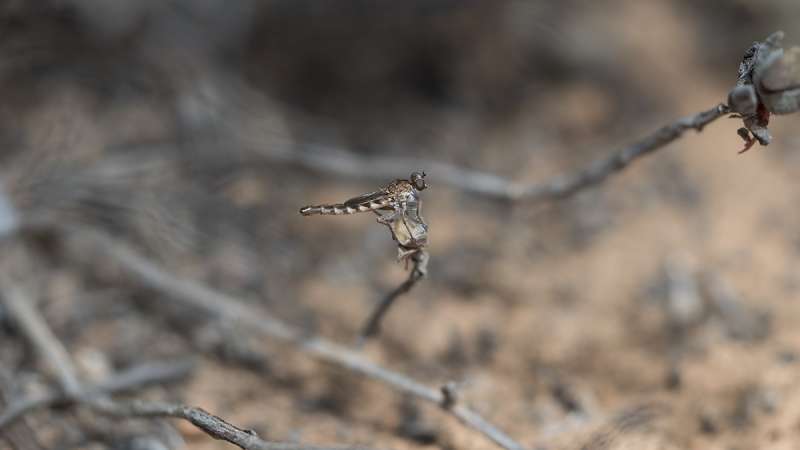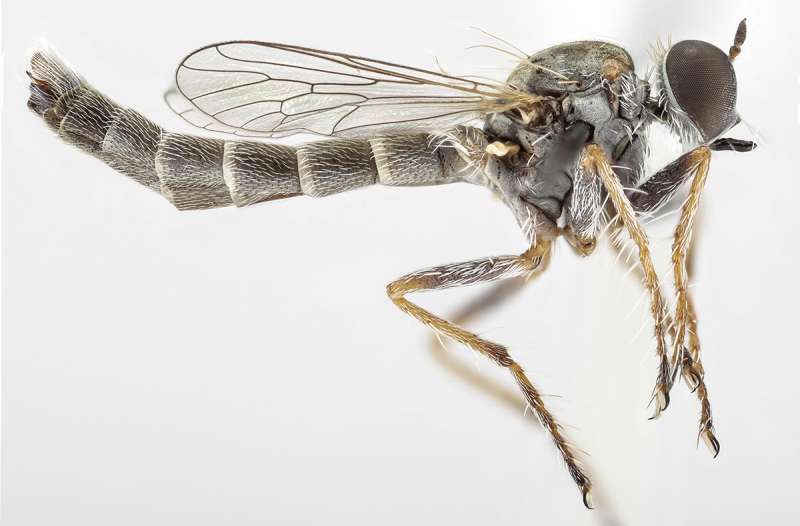Assassins on the rise: A new species and a new tribe of endemic South African robber flies

Discovery of a new species of assassin flies led to the redescription of its genus. This group of curious predatory flies live exclusively in South Africa, preferring relatively dry habitats. Following the revisit, authors Drs Jason Londt, KwaZulu-Natal Museum, South Africa, and Torsten Dikow, Smithsonian Institution National Museum of Natural History, USA, publish updated information about all species within the genus, now counting a total of seven species, and also establish a new tribe. Their study is published in the open access journal African Invertebrates.
The family of assassin flies (Asilidae), also known as robber flies, are curious insects, which have received their common name due to their extremely predatory behavior. The assassin flies prey on a great variety of insects, including beetles, moths, butterflies, wasps, other flies, as well as some spiders, as early as their juvenile stage of development. When hunting, they would ambush their prey and catch it in flight. Then, they would pierce the victim with a short and strong proboscis, while injecting venom. Once in the body of the prey, it quickly dissolves the insides, so that the assassin fly can suck them out.
The published study was spawned by the collection of new specimens of previously described assassin flies of the species Trichoura tankwa by the junior author in December 2015. These specimens could not be easily identified and so the authors started to look at all available specimens in natural history museums.
The new species, called Trichoura pardeos, was discovered in Tierberg Nature Reserve by the authors in 2004, a small conservation area located on the north banks of the Gariep River in the Northern Cape province of South Africa. The habitat comprises almost entirely a large rocky hill, where the vegetation is scarce and dominated by drought-resistant plants, such as aloes. The fly is predominantly red-brown in colour, with silvery, white and yellowish markings.

Having noted morphological variation between the species inhabiting areas with differently timed yearly rainfalls, the entomologists suggest that two groups within the studied genus have adapted to these different patterns in western and eastern South Africa. They also expect that species representing Trichoura could be also dwelling in Namibia, Botswana, Mozambique and possibly Zimbabwe.

More information: Jason G.H. Londt et al, A review of the genus Trichoura Londt, 1994 with the description of a new species from the Northern Cape Province of South Africa and a key to world Willistonininae (Diptera, Asilidae), African Invertebrates (2016). DOI: 10.3897/AfrInvertebr.57.10772
Provided by Pensoft Publishers



















